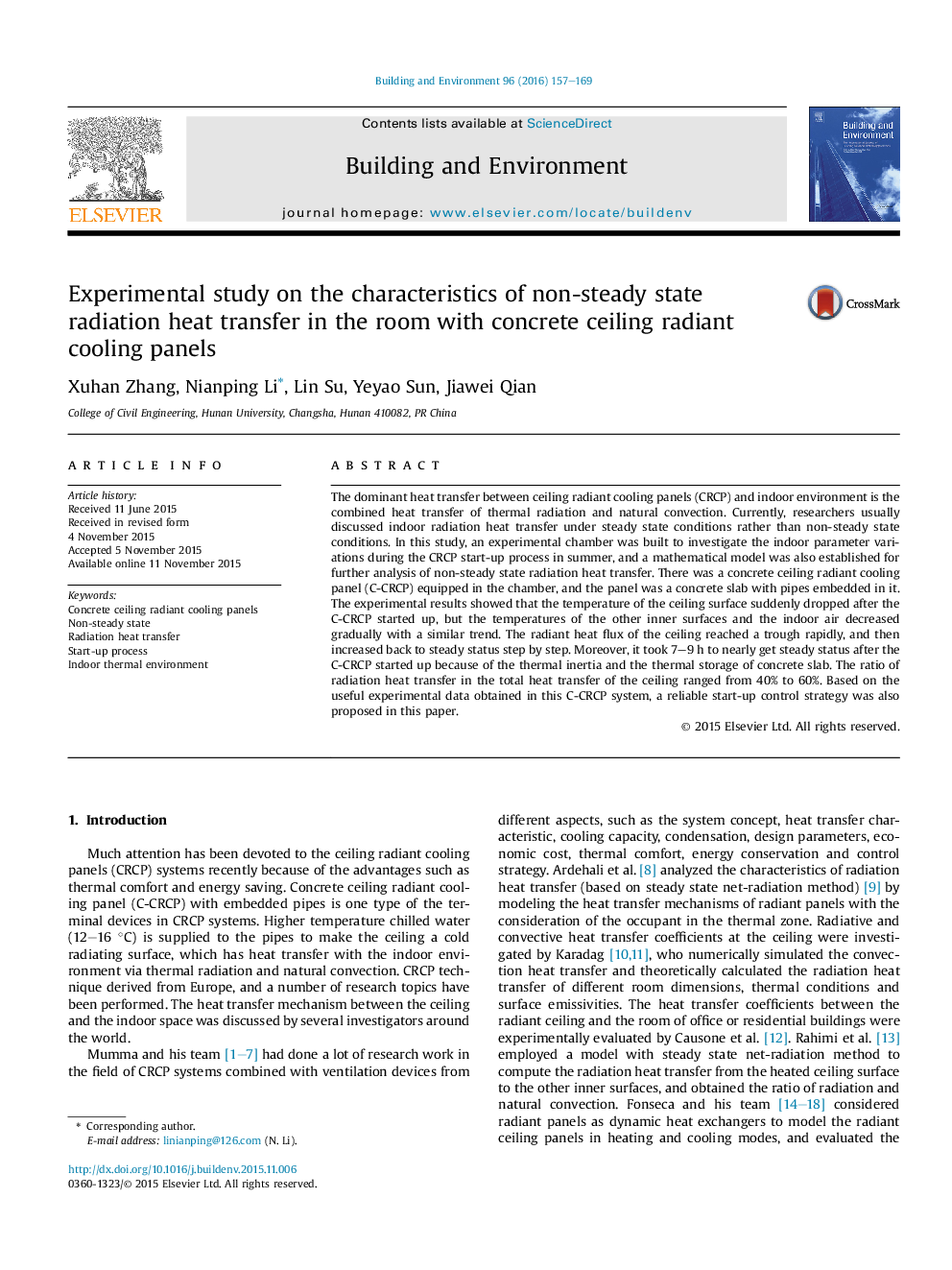| کد مقاله | کد نشریه | سال انتشار | مقاله انگلیسی | نسخه تمام متن |
|---|---|---|---|---|
| 247736 | 502525 | 2016 | 13 صفحه PDF | دانلود رایگان |
• Non-steady state radiation heat transfer of C-CRCP was experimentally studied.
• The C-CRCP adopted was constituted by a concrete slab embedded with pipes.
• Temperature and radiant heat flux variation trends were emphatically analyzed.
• The ratio of thermal radiation in the total heat flux of C-CRCP was calculated.
• A reliable starting control strategy of the C-CRCP was proposed in this paper.
The dominant heat transfer between ceiling radiant cooling panels (CRCP) and indoor environment is the combined heat transfer of thermal radiation and natural convection. Currently, researchers usually discussed indoor radiation heat transfer under steady state conditions rather than non-steady state conditions. In this study, an experimental chamber was built to investigate the indoor parameter variations during the CRCP start-up process in summer, and a mathematical model was also established for further analysis of non-steady state radiation heat transfer. There was a concrete ceiling radiant cooling panel (C-CRCP) equipped in the chamber, and the panel was a concrete slab with pipes embedded in it. The experimental results showed that the temperature of the ceiling surface suddenly dropped after the C-CRCP started up, but the temperatures of the other inner surfaces and the indoor air decreased gradually with a similar trend. The radiant heat flux of the ceiling reached a trough rapidly, and then increased back to steady status step by step. Moreover, it took 7–9 h to nearly get steady status after the C-CRCP started up because of the thermal inertia and the thermal storage of concrete slab. The ratio of radiation heat transfer in the total heat transfer of the ceiling ranged from 40% to 60%. Based on the useful experimental data obtained in this C-CRCP system, a reliable start-up control strategy was also proposed in this paper.
Journal: Building and Environment - Volume 96, 1 February 2016, Pages 157–169
